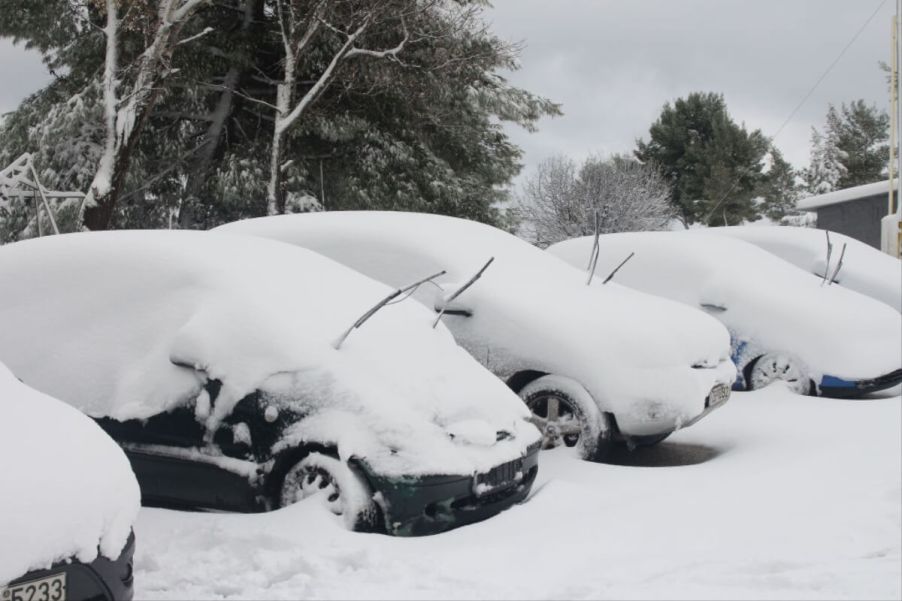
5 Winterizing Car Tips You May Not Have Thought of When Moving to Cold Weather
Moving from warm coastal climates or dry desert environments to proper winter cold can wreak havoc on your typical vehicle maintenance. However, there are standard precautions you can take when winterizing your car to get it ready for regular driving in the snow instead of storing it for the season. Check out a few moves you can make to increase your winter preparedness beyond all-wheel drive (AWD), like using winter tires and a trickle charger to keep your battery topped up.
How can you winterize your car for regular driving in the cold and snow?

Winterizing your car for storage is relatively straightforward; use a fuel stabilizer, a battery charger, and protect your car from direct contact with precipitation as much as possible. However, there are a few ways to keep your vehicle ready for use through a cold winter, too.
- Trickle charger
- Scraper and brush
- Block heater
- Oil pan heater
- Winter tires
Should I use a trickle charger in the winter?
A trickle charger, sometimes called a battery tender, can keep your battery at operating charge throughout a cold winter. As a result, a trickle charger is an essential component in winterizing your car, whether you plan to drive it regularly or not.
At 32 degrees Fahrenheit, many car batteries will lose as much as 20% of their typical capacity, per Firestone. Further, as the temperature drops, batteries will lose much of their ability to perform vital tasks. Moreover, many trickle chargers cost less than $30, a small ask for keeping your battery ready to power your starter in bitter cold. Finally, equipping your vehicle with a quick connector, or “pigtail,” could make keeping your battery topped up a sinch.
A scraper and brush combo could help you stay on top of winterizing your car
Perhaps the most underappreciated weapon in a winterization arsenal, a scraper and car brush combination can help you get back on the road quickly. I’ve watched firefighters forget this tool and scrape ice from their windshields using a plastic card, and while it will do the job, it’s tedious. It’s a simple but invaluable tool after leaving your car exposed to harsh winter elements.
Do you really need a block heater?
A block heater helps your vehicle reach operating temperature quickly. While not absolutely necessary, a block heater will aid with starting in freezing temperatures. Furthermore, a block heater can reduce environmentally harmful emissions caused by remote starting and idling.
In Alaska, engine block heaters are commonplace. Understandable, considering average winter temperatures that reach -30 degrees Fahrenheit or colder. Consequently, winterizing your car in the Last Frontier is a matter of life and death, not just inconvenience.
What are the benefits of an oil pan heater?
Like a block heater, an oil pan heater will help your vehicle start and reach operating temperatures quickly. Better yet, an adhesive application is an easy, cheap, and effective way to keep your oil non-viscous in freezing temperatures.
Many oil pan heaters cost under $50 and plug right into a standard, American 110v outlet. Also, like a block heater, an oil pan heater is convenient in the cold yet essential in frigid temperatures.
What is better, AWD or snow tires?
While AWD multiplies traction for inclement weather, seasonally-specific tire technology outperforms the grippy system. Winter tires, or snow tires, have deeper grooves in the tread to grip hard in slick winter conditions like snow. Furthermore, winter tires stop and handle better in snow than a car with all-season tires and AWD, per CNBC.
What do you do to keep your ride winter-ready? Share your thoughts and experiences in the comments below! Keep up with MotorBiscuit for the latest car ownership and buying tips!



